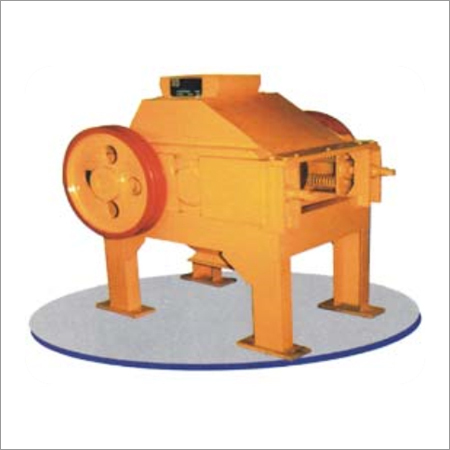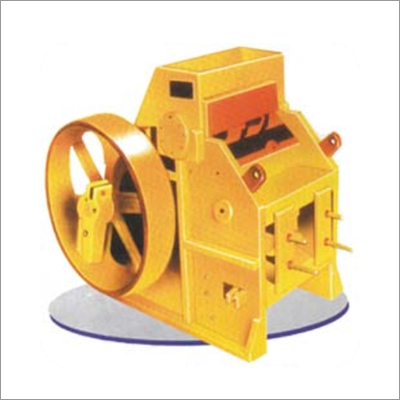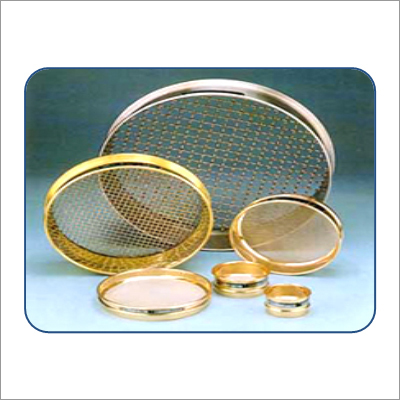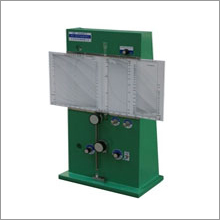Riffle Sample Divider
Riffle Sample Divider Specification
- Features
- Corrosion resistant; Portable; Easy to clean and maintain; Supplied with interchangeable riffle boxes
- Machine Type
- Laboratory Equipment
- Control System
- Manual Handles
- Surface Treatment
- Polished & Painted
- Accuracy
- High sample division accuracy, typically 2%
- Accessories Type
- Sample pans, collection containers
- Automation Grade
- Manual
- Technology
- Manual Sampling
- Power Source
- Manual
- Operating Pressure
- Ambient
- Type
- Sample Divider
- Material
- Mild Steel / Stainless Steel
- Function
- Evenly splits and divides powder, granular, and bulk materials for sampling
- Application
- Soil, cement, aggregates, and other powder/granular sample splitting
- Voltage
- Not required (manual operation)
Riffle Sample Divider Trade Information
- Minimum Order Quantity
- 1 Number
- Supply Ability
- 04 Per Month
- Delivery Time
- 3-8 Week
About Riffle Sample Divider
Being committed towards ensuring complete client satisfaction, we are manufacturing and exporting an exceptional range of Riffle Sample Divider. Made and designed using premium quality materials and modern technologies, these dividers are used for sampling aggregates ores refractory materials, pigment soap, cement and powdered coal. Owing to characteristics like negligible maintenance, easy operation and modular design, our Riffle Sample Divider is cherished and appreciated over the global platform.In addition, we are capable of customizing these dividers as per the needs of the clients.
Specifications:
It consists of a sheet metal box mounted on legs and fitted with a series of chutes or equal width which discharge the material alternatively in opposite directions into speculate panes. The chutes of the riffle are steep enough to allow rapid flowing of the material .
| Chute Width | No of Chutes |
|---|---|
| 12.5mm | 16 |
| 20mm | 16 |
| 25mm | 12 |
| 38mm | 12 |
| 50mm | 8 |
Precision Sampling for Laboratories
Engineered for reliable and repeatable division of powder, granular, and aggregate samples, the Riffle Sample Divider is widely used in laboratory testing and quality control. Its robust construction and adjustable slots ensure consistency and accuracy, making it suitable for regulatory and industrial applications where representative sampling is critical.
Versatility Across Multiple Materials
Suitable for soil, cement, and aggregates, this sample divider supports a wide range of laboratory applications. Available in different configurations, it seamlessly handles sample materials with varying particle sizes. Its interchangeable riffle boxes and choice of finishes (smooth powder coated or mirror finish SS) cater to specific laboratory needs.
Manual Operation for Greater Control
Equipped with manual handles and requiring no electrical supply, the Riffle Sample Divider offers dependable sampling without the constraints of automation. Its simple yet effective control system provides operators full oversight during sample division, ensuring high accuracy and minimal contamination risk.
FAQs of Riffle Sample Divider:
Q: How does the Riffle Sample Divider ensure accurate sample splitting?
A: The Riffle Sample Divider uses a series of precision-cut slots (fixed or adjustable between 10 mm and 25 mm) to evenly distribute bulk material into multiple collection pans. This mechanism ensures a representative and unbiased sampling, with typical division accuracy within 2%, ideal for laboratory and quality control applications.Q: What types of materials can be processed using this sample divider?
A: This equipment is suitable for splitting a wide range of powder, granular, and bulk materialscommonly soil, aggregates, cement, and various laboratory test samples. Its adjustable slots and durable construction make it versatile for different sample types in laboratory environments.Q: When should a laboratory use a riffle sample divider?
A: A riffle sample divider should be used whenever precise and representative sample subdivision is required prior to analysis. It is particularly necessary in routine soil, cement, and aggregate testing to ensure that all portions of the sample accurately reflect the whole.Q: Where are riffle sample dividers typically used?
A: These dividers are predominantly used in materials testing laboratories, research facilities, and quality control departments involved with construction materials, soil science, or industrial powders, including cement manufacturing and mineral analysis.Q: What is the proper process for using the Riffle Sample Divider?
A: To use, load the sample into the top of the divider. Operate the manual handle if present, allowing the material to pass through the riffle slots. Collect the subdivided samples in the supplied pans below, alternating between them for true representativity. The device is portable and easy to clean after each use.Q: What benefits does this sample divider offer compared to manual hand splitting?
A: The riffle sample divider minimizes the risk of bias and human error inherent in manual splitting. It enables quick, standardized, and accurate sample division, improves repeatability of results, and ensures compliance with international standards such as IS 1607 and ASTM C136.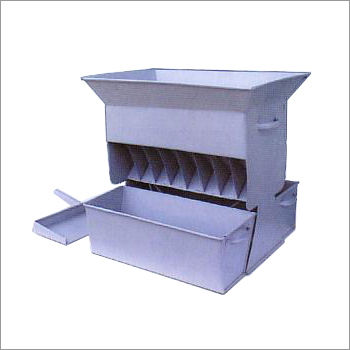

Price:
- 50
- 100
- 200
- 250
- 500
- 1000+
More Products in Metallurgical Engineering Lab Instruments Category
Roll Crusher
Price Range 10000.00 - 600000.00 INR / Number
Minimum Order Quantity : 1 Number
Technology : Double Roll Crushing
Material : Mild Steel
Surface Treatment : Paint Coated
Features : High throughput, Low maintenance, Uniform particle size, Robust construction
Jaw Crusher
Price Range 10000.00 - 600000.00 INR / Number
Minimum Order Quantity : 1 Number
Technology : Mechanical crushing
Material : Cast Iron & Mild Steel
Surface Treatment : Paint Coated
Features : Strong construction, Easy to operate and maintain, Long service life
Test Sieves
Price Range 10000.00 - 600000.00 INR / Number
Minimum Order Quantity : 1 Number
Technology : Perforation & Weaving
Material : Stainless Steel 304
Surface Treatment : Polished Stainless Steel
Features : Corrosionresistant, Easy to Clean, Stackable Design
Blaine's Apparatus-Average Particle Size Analyser
Price Range 10000.00 - 600000.00 INR / Number
Minimum Order Quantity : 1 Number
Technology : Air Permeability Method
Material : Borosilicate Glass & Metal Stand
Surface Treatment : Polished
Features : Portable, easy to use and maintain, provides accurate measurement of particle fineness
Factory Address :
Plot No 47, Emerald Indl Estate, Kidc Indl Area, Deku Village, Khalapur Taluk,
Khopoli Raigad, Maharahtra

 Send Inquiry
Send Inquiry
